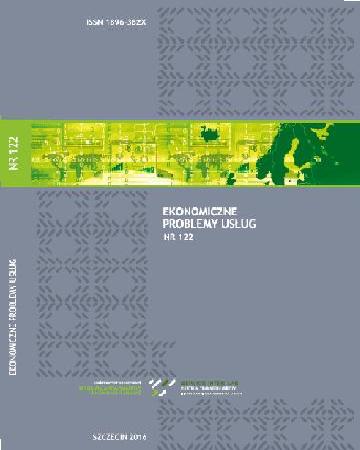
ISSN: 1896-382X
eISSN: 2353-2866
OAI
DOI: 10.18276/epu.2017.126/2-18



Issue archive /
nr 126 (2) 2017
Doświadczanie agresji słownej w cyberprzrestrzeni wśród cyfrowych tubylców
(Experiencing hate speech among digital natives)
| Authors: |
Marta
R.Jabłońska
Uniwersytet Łódzki Wydział Ekonomiczno-Socjologiczny Instytut Ekonomik Stosowanych i Informatyki Katedra Informatyki Ekonomicznej |
| Keywords: | hate speech digital natives cybercrime |
| Data publikacji całości: | 2017 |
| Page range: | 9 (175-183) |
| Klasyfikacja JEL: | K24 L86 Z13 |
Abstract
The paper describes hate speech on the internet among young people. Digital natives, living in a cyberspace, are becoming vulnerable to aggressors attacks. The aim of the paper is to present a summary of several researches dedicated to haters conducted by the author in the last few months. Results present experiences and attitudes towards hate speech among young people.
Download file
Article file
Bibliography
| 1. | Aumer-Ryan, K„ Hatfield, E. (2007). The Design of Everyday Hate: A Qualitative and Quantita¬tive Analysis. Interpersona, I (2), 143-172. |
| 2. | Balci, K„ Salah, A.A. (2014). Automatic analysis and identification of verbal aggression and abusive behaviors for online social games. Computers in Human Behavior, 53, 517-526. |
| 3. | Banks, J. (2011). European Regulation of Cross-Border Hate Speech in Cyberspace: The Limits of Legislation. European Journal of Crime Criminal Law and Criminal Justice, I9, 1-14. |
| 4. | Chiang, Y-T„ Lin, S„ Zhi-Feng, L.E. (2012). The effects of online discussion forum aggressive messages and cognitive distortion on usersll.l.egative affect and aggression. Turkish Online Journal Of Educational Technology, II (2), 238-245. |
| 5. | Collins, E„ Freeman, J„ Chamarro-Premuzic, T. (2012). Personality traits associated with prob¬lematic and non-problematic massively multiplayer online role playing game use. Per¬sonality and Individual Differences, 52, 133-138. |
| 6. | Erjavec, K„ Kovaćić, M.P. (2012a). "You Don't Understand, This is a New War!" Analysis of Hate Speech in News Web Sitesm:'.omments. Mass Communication and Society, 15 (6), 899-920. |
| 7. | Erjavec, K„ Kovaćić, M.P. (2012b). Journalism and the Internet. Teorija in Praksa, 49, 190-203. Harris, C„ Rowbotham, J„ Stevenson, K. (2009). Truth, law and hate in the virtual marketplace of ideas: perspectives on the regulation of Internet content. Information & Communications Technology Law, 18 (2), 155-184. |
| 8. | Lee, J. (2008). Unravelling the dynamics and trends of social capital: Case of South Korea. Asian Journal o/Social Psychology, II, 105-115. |
| 9. | Levmore, S„ Nussbaum, M.C. (red.). (2011). The Offensive Internet: Speech, Privacy, and Repu¬tation. Boston: Harvard University Press. |
| 10. | Lincoln, R.A., Wilson P. (2005). Contemporary comment: An examination of Australian internet hate sites. Humanities & Social Sciences Papers. Pobrane z: http://epublications.bond. edu.au/hss_pubs/39 (27.12.2016). |
| 11. | Liu, E.Z.F„ Ko, H.W. (2007). Implementation and evaluation of an e-tutor program. WSEAS Transactions on Communications, 6 (4), 547-552. |
| 12. | Markey, P.M., Markey, C.N. (2010). Vulnerability to violent video games: A review and integra¬tion of personality research. Review of General Psychology, 14, 82-91. |
| 13. | McDevitt, J., Levin, J., Bennett, S. (2002). Hate crime offenders. Journal of Social Issues, 58, 303-317. |
| 14. | Nasi, M., Rasanen, P., Rawdon, J., Oksanen, A, Holkeri, E. (2015). Exposure to online hate material and social trust among Finnish youth. Information Technology & People, 28 (3), 607-622. |
| 15. | Nowak, A., Krejtz, K. (2006). Internet z perspektywy nauk społecznych. W: D. Batorski, M. Marody, A Nowak, (red.), Społeczna przestrzeń Internetu (s. 1-15). Warszawa: |
| 16. | Academica. |
| 17. | Okansen, A, Rawdon, J., Holkeri, E., Nasi, M., Rasanen, P. (2014). Exposure to Online Hate among Young Social Media Users. W: M.N. Warehime (red.), Soul of Society: A Focus on the Lives of Children & Youth (Sociological Studies of Children and Youth, Vol. 18, s. 253-273). Oklahoma City: Emerald Group Publishing Limited. |
| 18. | Perry, B., Olsson, P. (2009). Cyberhate: The Globalization of Hate. Information and Communica¬tions Technology and Law, 18 (2), 185-199. |
| 19. | Prensky, M. (2001). Digital Natives, Digital Immigrants. On the Horizon, 9 (5). Pobrane z: http://www.marcprensky.com/writing/Prensky%20-%20Digital%20Nat ives,%20Digi tal%20Immigrants%20-%20Partl .pdf (27.12.2016). |
| 20. | Pyżalski, J. (2009). Agresja elektroniczna dzieci i młodzieży - różne wymiary zjawiska. Dziecko Krzywdzone, 1 (26), 12-26. |
| 21. | Sabatini, F., Sarracino, F. (2014). Online networks destroy social trust. Pobrane z: http://arxiv.org/abs/1409.0267 (27.12.2016). |
| 22. | Schleb, C., Preuss, M. (2016). Governing hate speech by means of counterspeech on Facebook. |
| 23. | Materialy konferencyjne 66th ICA Annual Conference. Fukuoka, Japonia, s. 1-23. |
| 24. | Steinfield, C., Ellison, N.B., Lampe, C. (2008). Social capital, self-esteem, and use of online social network sites: A longitudinal analysis. Journal of Applied Developmental Psychol¬ogy, 29, 434-445. |
| 25. | Suler, J. (2004). The online disinhibition effect. Cyberpsychology & Behavior, 7 (3), 321-326. Tereszkiewicz, A (2012). Do Poles flame? Aggressiveness on Polish discussion groups and social networking sites. W: L. Laineste, D. Brzozowska, W. Chlopicki (red.), Estonia and Poland Creativity and tradition in cultural Communications. Jokes and their relations, 1 (s. 237-268). Tartu: ELM Scholarly Press. |
| 26. | Vivolo-Kantor, AM., Martell, B., Holland K., Westby R. (2014). A Systematic Review and Content Analysis of Bullying and Cyber-bullying Measurement Strategies. Aggression and Violent Behavior, 19 (4), 423-434. |